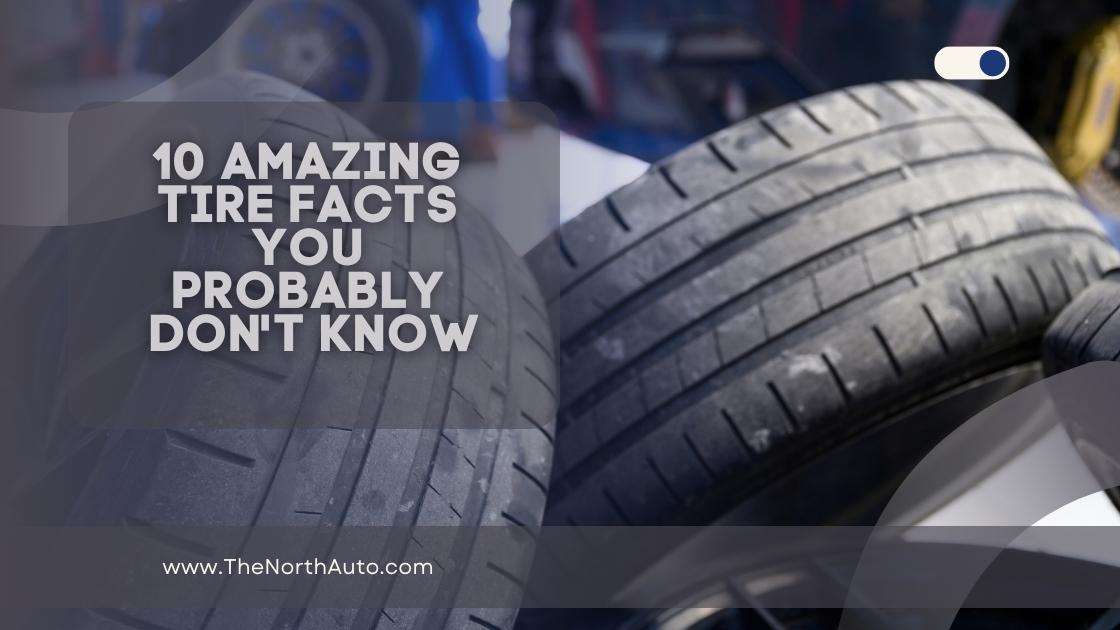
Jun 7,2023
Welcome to this fascinating article, where we dive into the world of tires and explore some truly amazing and little-known facts. Tires are essential to our vehicles, providing safety, performance, and comfort on the road. While we often take them for granted, there is much more to tires than meets the eye. Did you know that the design and composition of trailer parts, such as trailer tires, play a crucial role in ensuring smooth towing and stability? Get ready to be surprised as we uncover ten amazing tire facts you probably don't know. So buckle up, and let's hit the road!
Did you know that the average car tire supports a load of two to four times its own weight? That's incredible! Tires play a crucial role in ensuring a smooth and safe ride. They not only bear the vehicle's weight but also provide traction, grip, and stability. So next time you hit the road, remember to appreciate your tires' incredible strength and resilience.
Tires have come a long way since their inception. The oldest known tires were discovered in the ancient city of Ur, dating back to around 3500 BC. These early tires were made of solid wooden wheels wrapped in leather. Can you imagine the bumpy ride they must have provided? Thankfully, tire technology has advanced significantly since then.
Tread patterns on tires are not just for aesthetics; they serve a vital purpose. Early tire treads were designed primarily for traction on various surfaces. However, as technology progressed, manufacturers began incorporating tread patterns that improved fuel efficiency, reduced road noise, and enhanced wet grip. Modern tire treads are engineered to provide optimal performance in different weather conditions and terrains.
Maintaining the correct tire pressure is essential for optimal performance and safety. Did you know that underinflated tires can increase fuel consumption by up to 3%? Also, improperly inflated tires can lead to uneven tread wear, reduced handling, and tire failure. Remember to check your tire pressure regularly and inflate them to the manufacturer's recommended levels.
Have you ever wondered what those numbers and letters on the side of your tire mean? They provide valuable information about the tire's size, type, and performance characteristics. Let's decode it: the first set of numbers indicates the tire's width in millimeters, the following number represents the aspect ratio (the ratio of the tire's height to its width), and the letter indicates the tire's construction type (R for radial). Understanding these codes helps you choose the right tire for your vehicle.
Radial tires revolutionized the tire industry when they were introduced in the late 1940s. Unlike bias-ply tires, which had crisscrossed layers of cord, radial tires featured cord layers running perpendicular to the tire's direction of travel. This innovative design improved fuel efficiency, traction, and durability. Today, radial tires are the standard in the automotive industry.
Imagine getting a flat tire in the middle of nowhere. Luckily, run-flat tires can save the day. These specially designed tires are constructed with reinforced sidewalls that support the vehicle's weight even when there is a loss of air pressure; this allows you to continue driving, albeit at reduced speeds and for a limited distance, until you can safely reach a tire service station. Run-flat tires are a true game-changer in terms of safety and convenience.
Tires have a significant impact on the environment. According to the Environmental Protection Agency (EPA), over 290 million tires are discarded annually in the United States alone. The good news is that tire recycling has become increasingly prevalent, with used tires being repurposed for various applications, including asphalt, playground surfaces, and even footwear. So the next time you need new tires, consider eco-friendly options or ensure proper recycling of your old ones.
Many modern vehicles are equipped with Tire Pressure Monitoring Systems (TPMS) to enhance safety on the road. These systems monitor the tire pressure and alert the driver if there is a significant deviation from the recommended levels. TPMS helps prevent accidents caused by underinflated or overinflated tires and promotes fuel efficiency. So, thank your TPMS for keeping you safe and your tires in check!
As technology continues to advance, so does tire innovation. One exciting development is the emergence of airless tires. These tires use new and creative materials and designs to eliminate the possibility of punctures and blowouts. Additionally, smart tires embedded with sensors and connectivity features are being developed. These tires can provide real-time information about tire pressure, tread wear, and road conditions, enhancing safety and performance on the road.
Tires are an incredible invention that has evolved over centuries to meet our growing transportation needs. We have come a long way from old wooden wheels to modern, high-performance tires. Hopefully, these ten amazing tire facts have given you a newfound appreciation for these unsung heroes of the road. So the next time you hop in your car, take a moment to marvel at the wonders of your trusty tires.
It is recommended to check your tire pressure at least once a month. However, inspecting your tires before long trips or when there are significant temperature changes is also a good idea.
It is best to replace all four tires at the same time. However, if only one tire needs replacement due to damage or wear, choosing a tire that matches the remaining tires' size, type, and performance characteristics is crucial.
The lifespan of tires can vary depending on several factors, including driving habits, road conditions, and tire maintenance. On average, tires last for around 40,000 to 60,000 miles. However, regular inspections and proper care can help extend their lifespan.
Winter tires are designed to provide enhanced traction and grip in cold weather conditions. Investing in winter tires can significantly improve your safety and control if you live in an area with harsh winters or frequently encounter snowy or icy roads.
Proper tire maintenance is critical to maximizing the lifespan of your tires. Here are some tips: